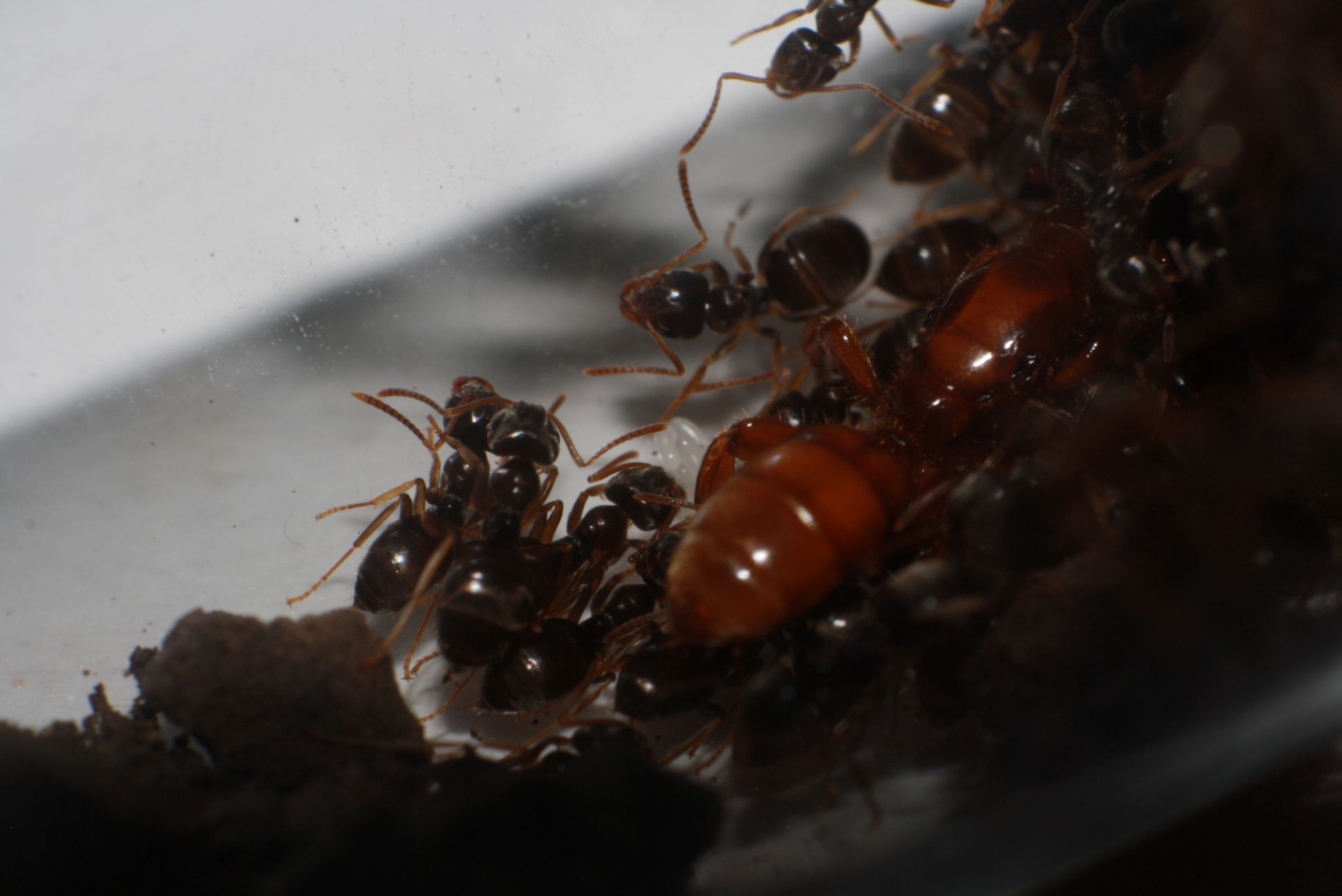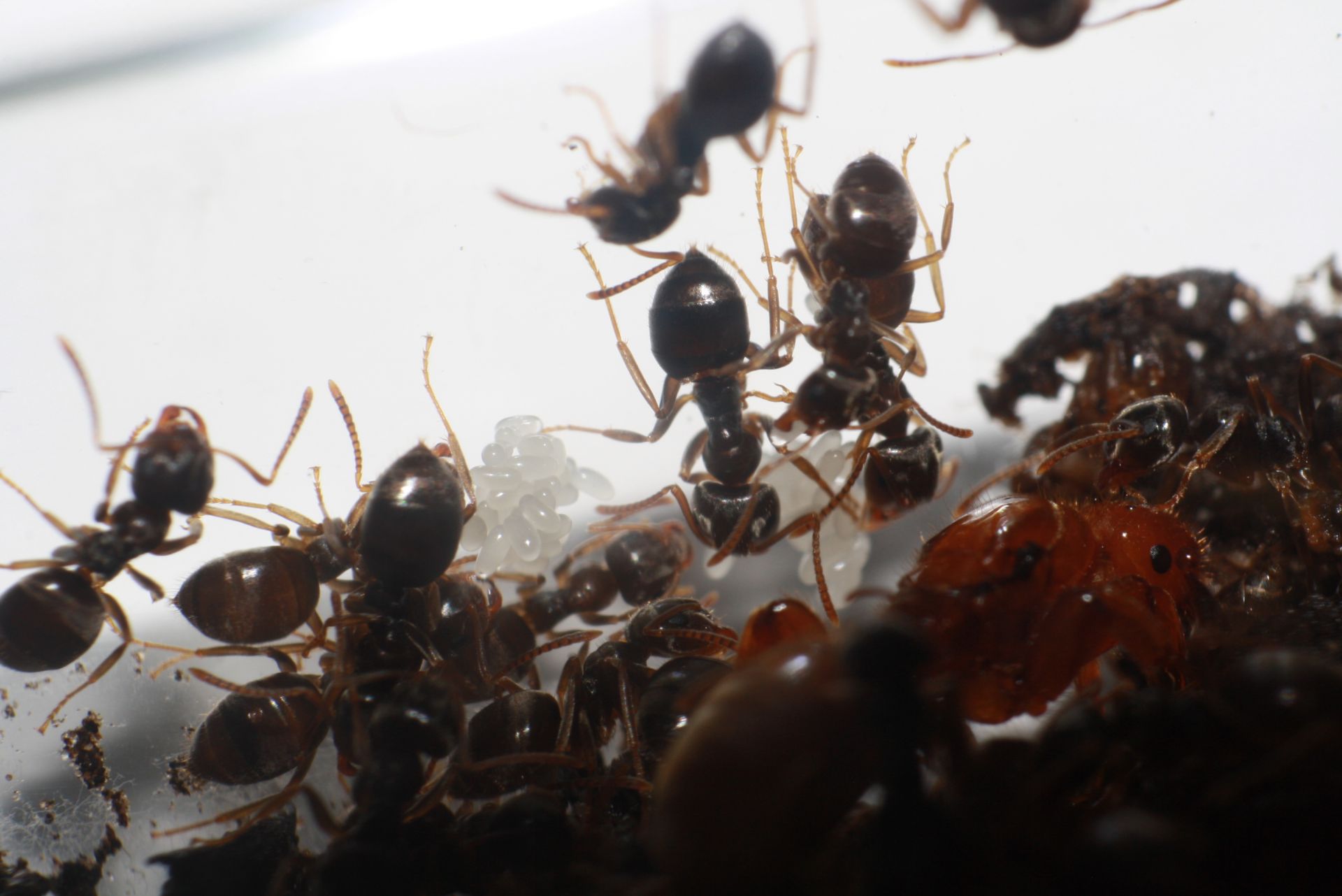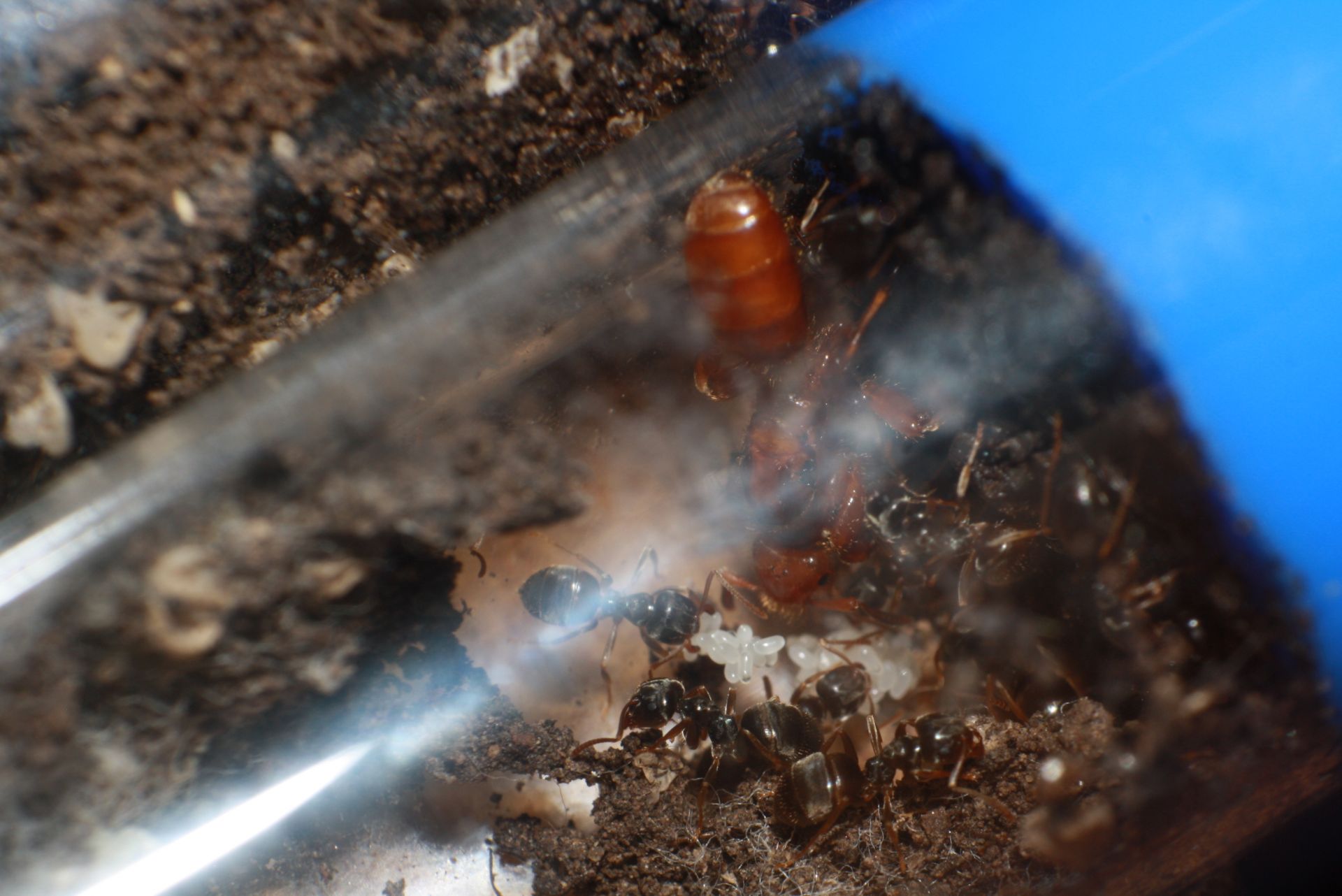I found a couple of Lasius cf. latipes queens this season and I'll be following their progress over the next few months. I don't expect workers before the end of the year, but I'm shooting for a good batch of larvae for each queen before I move away in November.
Timeline of events.
8/13 Queens flew with at least 5 other species of lasius:
8/14 Hosts introduced
8/16 Queens are accepted by the workers. I tubed each individually thereafter. Fed sugar water.
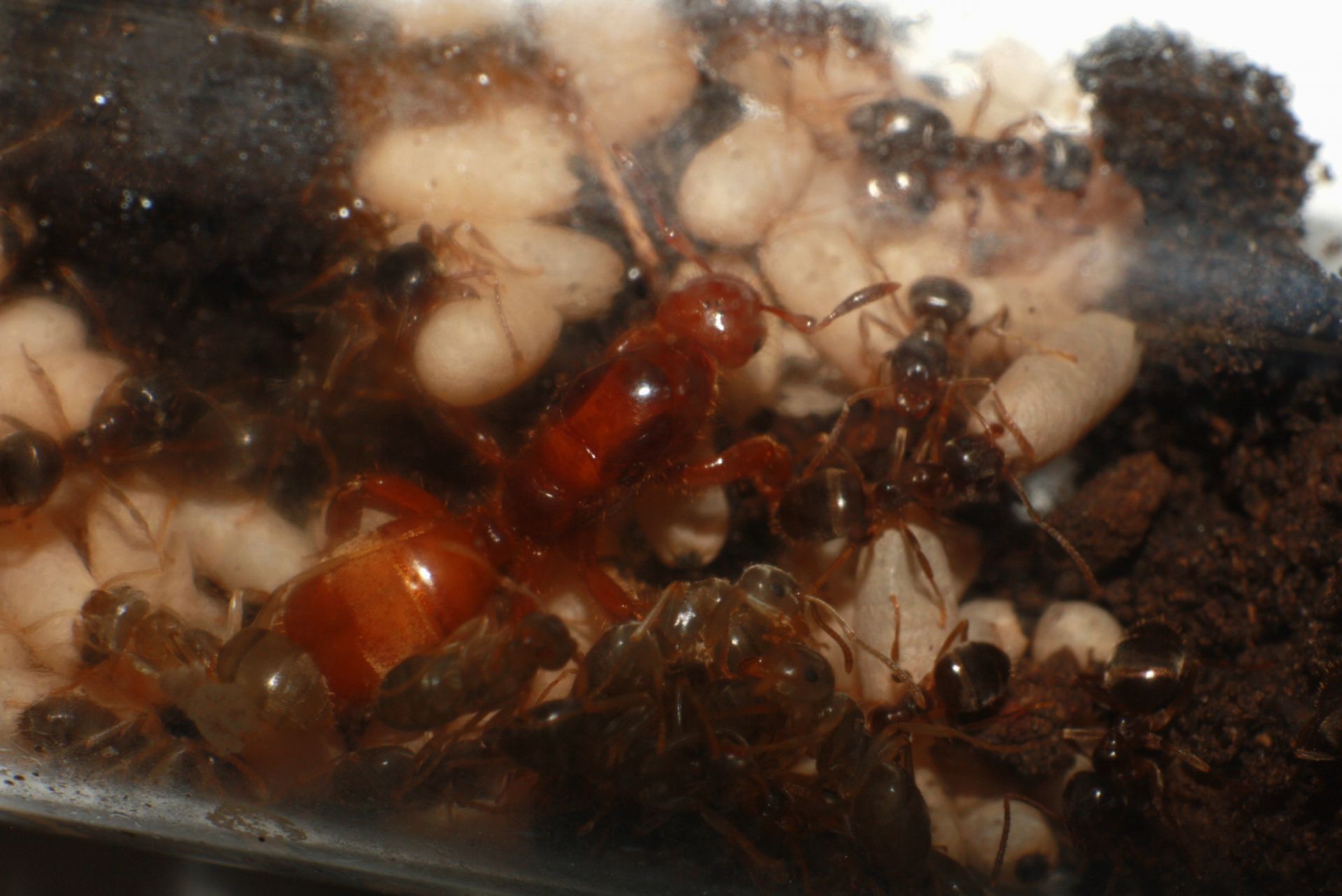
Following a series of heavy thunderstorms, I knew something would be flying. Sure enough, 6 species of Laius were flying in my yard, among other species. I found these queens in the evening, and let the parasites sit overnight with some water, planning to get hosts the next day. Indeed, the next day I hiked around the local mountains and found a good amount of host Lasius brood. I believe I mainly used L neoniger but I might have also got some L. americanus brood. I then used two methods to introduce the queens.
Method 1
Worker/callow method. I added a few workers to each queen on the first day. Second day I added a dozen callows and pupae. I tried to add the workers one at a time to allow the queens to settle. I did this at room temperature, with minimal disturbance in a closed test tube in a larger container containing the majority of the host colony.
Method 2
This method worked much better than I thought it would. I knew the parasites were basically impervious to the host's attacks, so I dumped the remaining dozen latipes queens in a large container with hundreds of workers/brood of the same host colony. The queens were immediately attacked by dozens of workers, but they didn't seem to care, not even attacking the workers. I left them overnight, and the next afternoon, only one queen was dead. Those remaining queens were integrated with the hosts. I left them alone, still in the dark, for a bit longer. I then tubed each queen with their own workers and brood, ranging from 20 to 70 hosts. I plan to use this method in the future for this species. It seems to replicate natural conditions, and is much less time/energy consuming than other common founding methods.
Here is video playlist I'll update with videos as the colony develops.
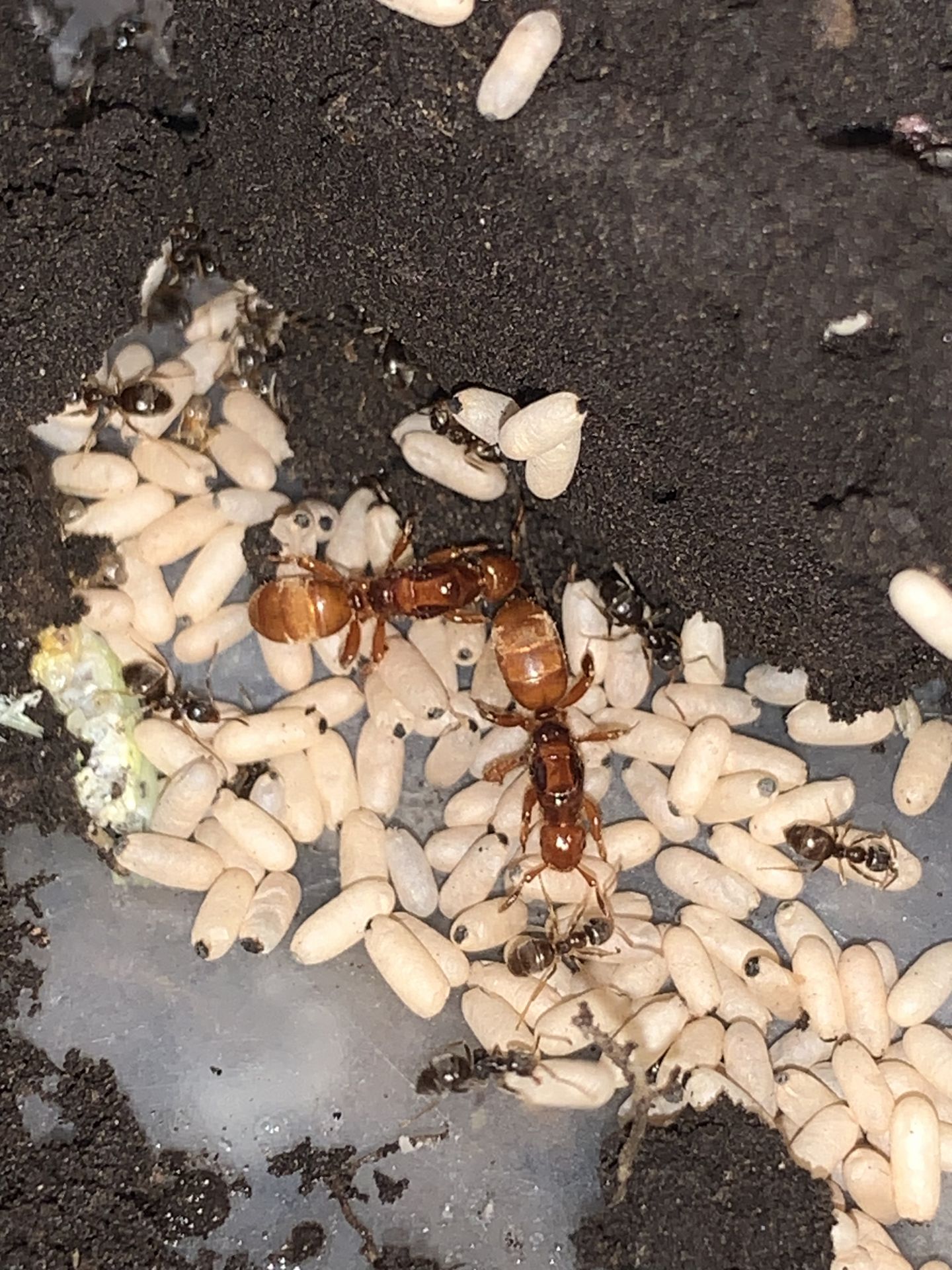
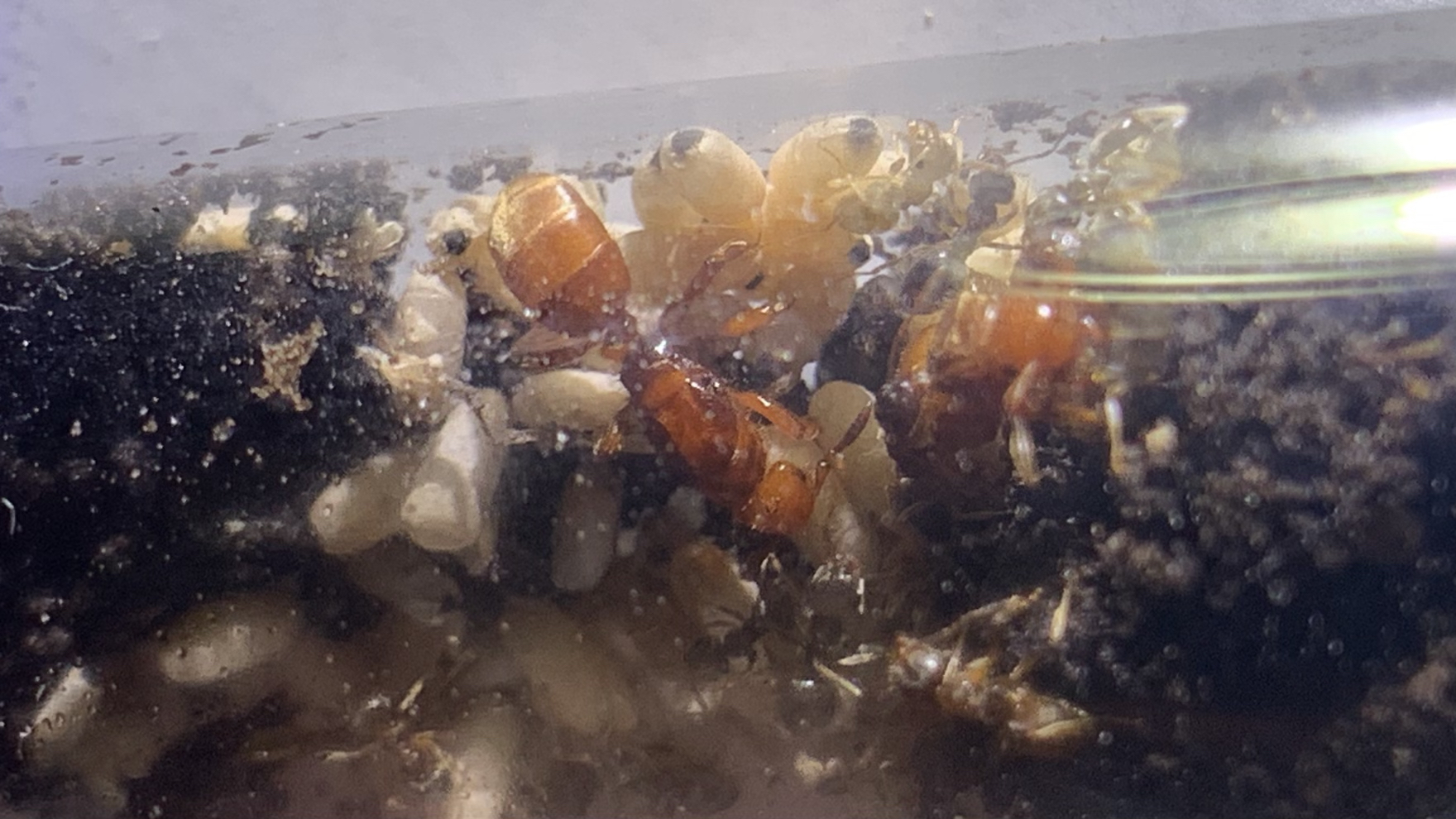
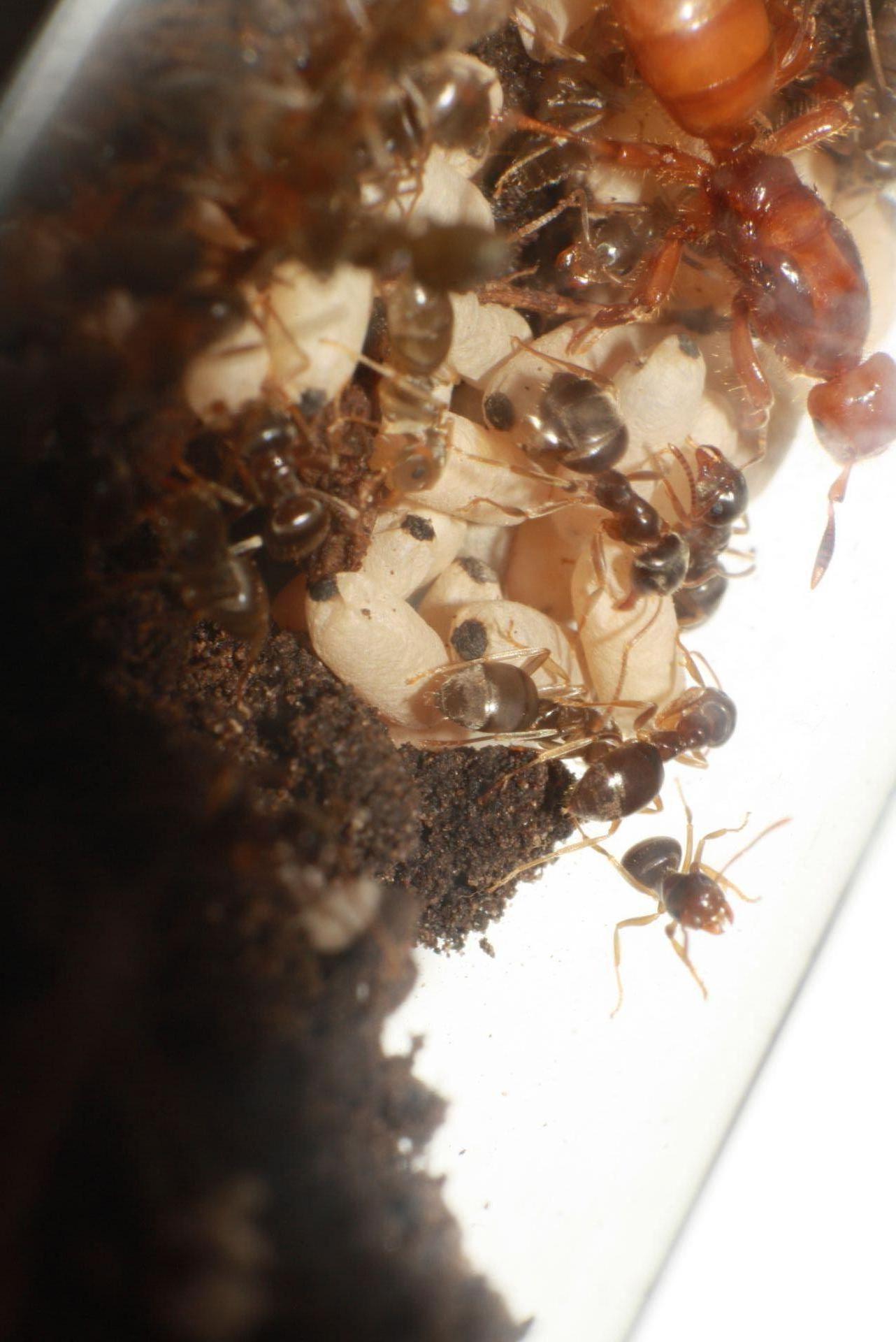
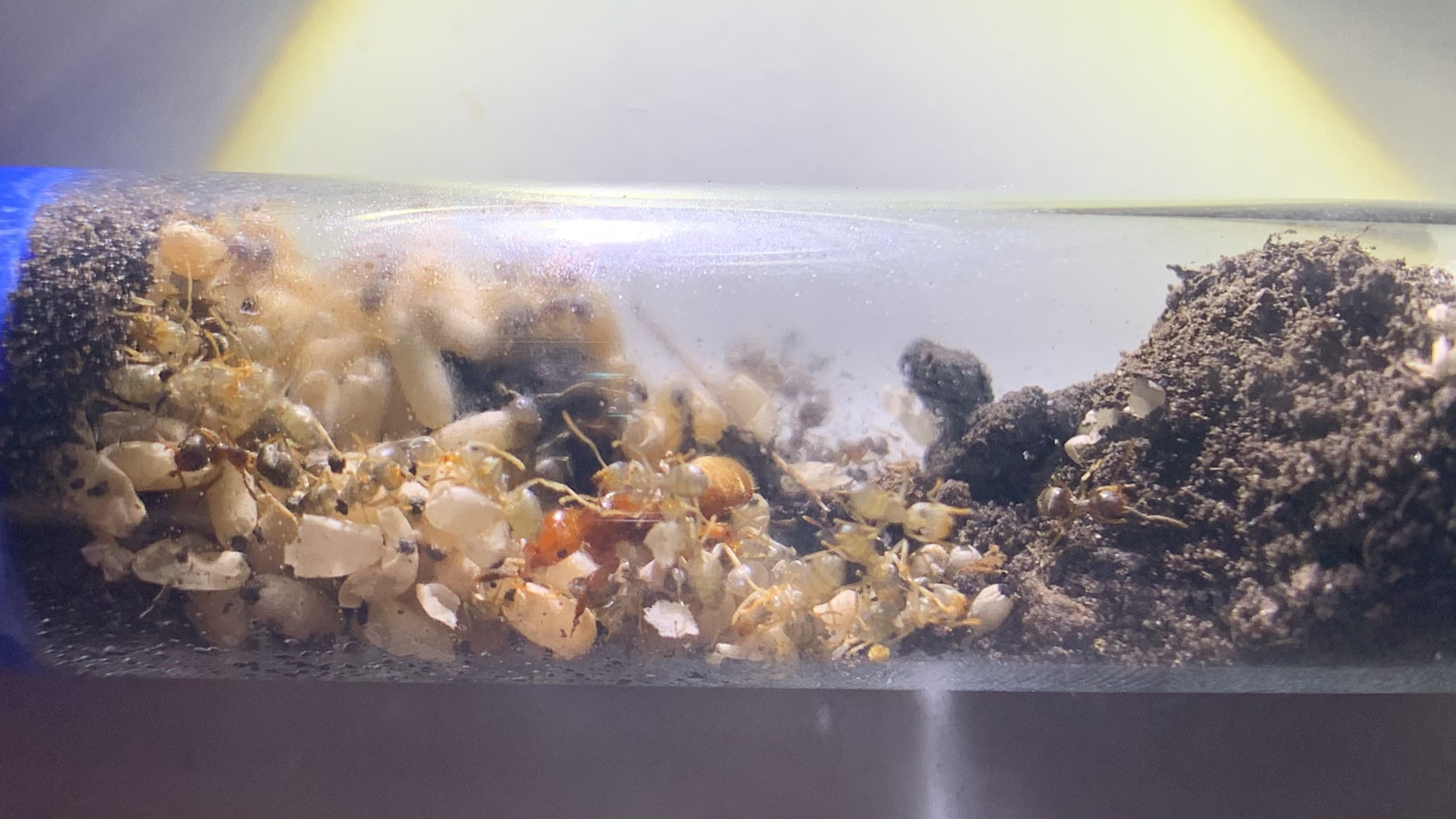
Edited by UtahAnts, September 16 2024 - 2:15 PM.






